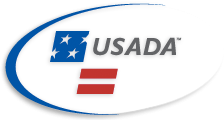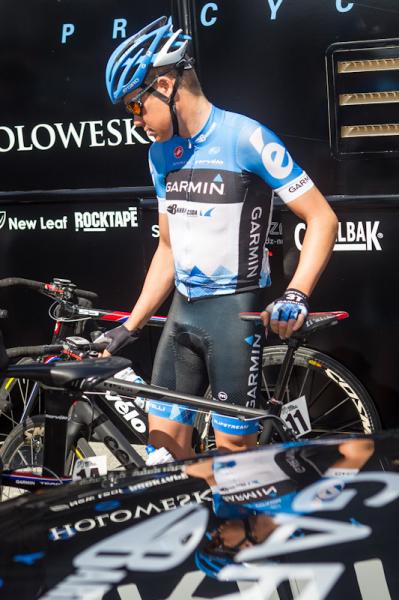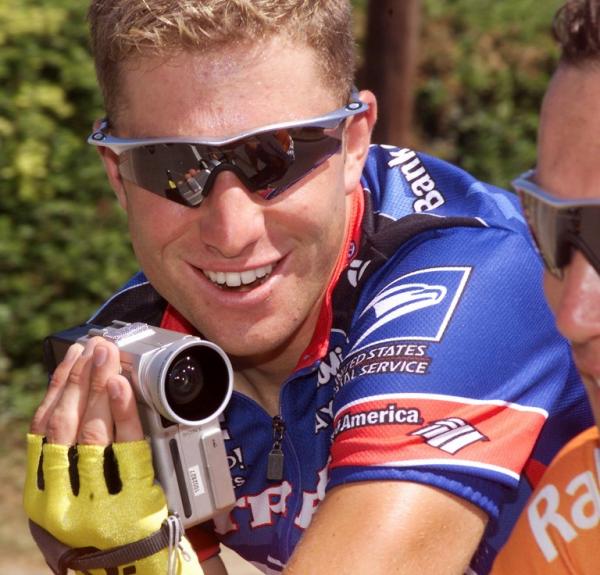USADA: Armstrong created a doping culture at US Postal
Former teammates describe change in attitude after Lance years





In its reasoned decision document, USADA reveals that Lance Armstrong not only doped himself in order to win his seven Tours de France, but he helped to propagate a culture of doping within his team, pressuring riders to dope, distributing doping products to his teammates, and casting aside those who refused to participate. He intimidated those who dared to break the 'omerta', or code of silence surrounding doping in the professional peloton, using his vast influence to ruin the post-cycling careers of at least one ex-teammate.
USADA's reasoned decision on Lance Armstrong follows the money trail
Six former Armstrong USPS teammates receive bans from USADA
George Hincapie confesses to doping
Michael Barry confesses to doping
USADA believes one-in-a-million chance Armstrong rode 2009, 2010 Tours clean
USADA: Lance Armstrong paid Ferrari more than $1 million
Danielson, Vande Velde and Zabriskie accept USADA bans
Leipheimer accepts USADA sanction following doping admission
Yet during Armstrong's record Tour de France run - the seven victories which in all likelihood will be stripped at the end of the current procedures - the same teammates who seemed to be willing participants in the game had to encourage each other when their conscience kicked in, and ultimately some chose to follow their hearts and give up the drugs.
It is difficult to reconcile the personalities we see in the USADA affidavits with the ones we see today touting the new, clean cycling lifestyle: riders from Garmin-Sharp such as Christian Vande Velde, Tom Danielson and Slipstream CEO Jonathan Vaughters, Team Sky's Michael Barry and Armstrong's right-hand man, George Hincapie, who says he got clean in 2006 before moving on to the anti-doping bastion of HTC-Highroad. All of them succumbed to drug use, and either shared drugs or encouraged each other to join in.
The turning points for the riders who came forward to testify against Armstrong vary, but each affidavit sheds some light on their changing attitudes as they distanced themselves from Armstrong.
"George Hincapie and I were quite open with each other about our use of performance enhancing drugs," Christian Vande Velde testified. "On several occasions, I expressed my nervousness about using EPO to George and he reassured me and got me through it."
Michael Barry, who recently retired from Team Sky, recounted his days with US Postal that it was Hincapie who suggested he use EPO.
"During an early season training ride, George told me he thought I was a talented rider and suggested I consider using EPO and testosterone," Barry testified just two days ago.
Get The Leadout Newsletter
The latest race content, interviews, features, reviews and expert buying guides, direct to your inbox!
Armstrong and Vaughters shared their use of EPO with each other, with Armstrong even injecting the drug in front of Vaughters, saying "[n]ow that you are doing EPO too, you can't go write a book about it."
Armstrong shared drugs with Hincapie, Hincapie shared them with Vande Velde, Vande Velde shared his with Barry - as the years went by, the doubts in riders' minds grew, but in no document does anyone suggest Armstrong ever wavered.
The same was not true for his teammates.
Hincapie himself testified that after Armstrong retired, "I began to think about my involvement in doping and that it was time to try and stand up for a change in the sport. ... As I talked with other riders, most approved of this approach." He states he has not used banned drugs or methods since 2006.
Barry describes his horrific 2005 Tour of Flanders crash, which left him alone, in a hospital with a concussion and broken vertebrae, and nobody from his Discovery Channel team came to be with him. It was this moment which made him decide to quit doping and to become more outspoken about cleaning up the sport. "My efforts to push for a cleaner sport were not always well received," he stated.
"One of the riders who publicly supported my efforts was George Hincapie."
Vande Velde testified to being pressured to stick to the program given to him by Dr. Michele Ferrari in 2001, one that "involved regular use of EPO and testosterone", he stated.
But his fears of needles and of being caught meant he was reluctant to follow the program. He was not selected for the 2002 Tour de France and was told by Armstrong, "if I wanted to continue to ride for the Postal Service team I would have to use what Dr. Ferrari had been telling me to use and would have to follow Dr. Ferrari's program to the letter.
"Johan Bruyneel confirmed this a few days later ... and said he expected to see improvement."
Vande Velde left the team in 2003 for the Liberty Seguros team, which he stated "had an organised doping program as well". After moving to CSC in 2005, and in the absence of "the pressure of an organised doping program, I decided I would only continue in the sport if I could ride clean." He stated he stopped doping in April, 2006.
Zabriskie describes coming into the sport at the time of the Festina affair in 1998, and testified, "I knew I did not want to use drugs". He was reassured by current USA Cycling president Steve Johnson (then with a performance lab), who said the sport was cleaning up.
By 2000, he caught the attention of Bruyneel with a win in the U23 GP des Nations. He was hired on at $40,000, but refused to participate in "recovery injections". In 2001, he was begging to keep his job, accepting a drop in salary to $15,000 just to stay. In 2002, he began using the injections, because "I came to believe it was just vitamins".
Although he joked about EPO on the team bus earlier, Zabriskie testified that he was reluctant to succumb to its use until finally, when his teammate Barry decided to give in, Zabriskie did as well in 2003.
After leaving US Postal in 2004, Zabriskie moved to CSC, during which time he used doping products growth hormone and testosterone several times, but then in June, 2006 he stated he quit doping for good,
Danielson testified to using EPO and blood transfusions on the Discovery Channel team (after taking a pay cut from $200,000 as a neo-pro with Fassa Bortolo to $125k to join Armstrong's team) in 2005, only beginning to get scared of doping in 2007 when the program shifted to blood doping.
"I began to worry that my blood would be mistaken for someone else's," Danielson testified. "The more I thought about it, the more worried I became.
"I found the whole process to be almost emotionally paralyzing," he said, admitting that he got so paranoid that he began to have panic attacks and was given a sedative on the last night of the 2007 Vuelta a España.
"I continued to experience anxiety attacks and have trouble finishing well in races. As a result, I stopped doping in 2007. He then left to join Vaughters' team "where I knew I would be more comfortable competing clean."
By all accounts, Armstrong never carried such concerns. Confident in his advisor, Michele Ferrari, he by all accounts doped with abandon through his retirement in 2005, continued working with Ferrari during his retirement on plans for marathons and triathlons, and resumed his cycling program when he returned to the sport in 2009.
Why was he so confident? It could be tied to a statement by Vaughters in his under-oath testimony: "I had a conversation with Lance in which he told me that the UCI should have detected a high level of HCG (human chorionic gonadotropin, a doping product and naturally occurring hormone indicative of testicular cancer in males) in his doping controls when he had cancer, and failed to do so.

Laura Weislo has been with Cyclingnews since 2006 after making a switch from a career in science. As Managing Editor, she coordinates coverage for North American events and global news. As former elite-level road racer who dabbled in cyclo-cross and track, Laura has a passion for all three disciplines. When not working she likes to go camping and explore lesser traveled roads, paths and gravel tracks. Laura specialises in covering doping, anti-doping, UCI governance and performing data analysis.